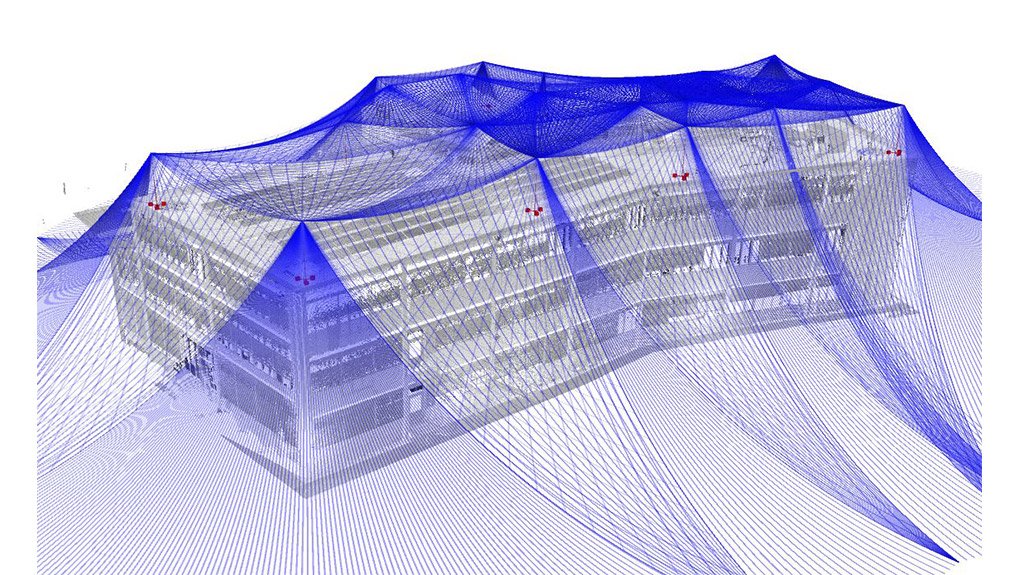
3D laser scanning, which can be used to capture real world information, delivers many benefits for industrial and engineering projects, providing precise and reliable data which allows for improved planning and scheduling. Without physically touching what is being measured, 3D laser scanning creates clear and precise digital records of existing conditions. Laser scanners send out a laser beam that is subsequently reflected off the structure or environment being scanned. The distance and reflectivity of each return signal is measured and recorded, creating a ‘point cloud’.
Hano Oelofse, MD at earthing and lightning protection company DEHN Africa, says this 3D imposition helps to protect plants and other constructions, explaining: “3D laser scanning makes it possible to quickly and easily take the exact measurements of complex objects and building structures. With the help of a laser scanner, existing plants and structures can be recorded and digitalised. At DEHN Africa, we are able to offer this service not only for lightning protection systems, but for any building, structure or plant that needs precise drawings of the complete layout.”
3D scanning works as follows:
-
The scan produces millions of measurement points called coordinates. Together the points create the raw data in the form of ‘point clouds’.
-
The individual point clouds and pictures produced in the scan are processed and consolidated using appropriate software.
-
The result is a detailed 3D model.
Oelofse continues, “The intricate detail of these points means that a person can get an exact measurement anywhere in the point cloud. DEHN Africa is able to use laser scanning to put together a lightning protection design for an existing building or plant. The process of creating your lightning protection design also gives you a 3D model of your plant itself, which can then be used for other types of planning and processing as well.”
Oelofse says the advantages of the DEHN 3D offering include the following:
-
Recording the as-built situation creates an accurate, high-quality design.
-
While the preliminary planning stage benefits from time saving, time-consuming redesigns that are based on old as-built drawings are also no longer necessary.
-
Existing plants and other buildings are digitalised in their as-built state. The documents can be kept for future use.
-
Different formats are available for further usage.
“Laser scanning is a valuable tool when designing, building, restructuring and extending technical facilities. It offers many economical and technical benefits during the design, construction and operating phases, also helping to minimise risks, and providing higher standards of safety,” concludes Oelofse.